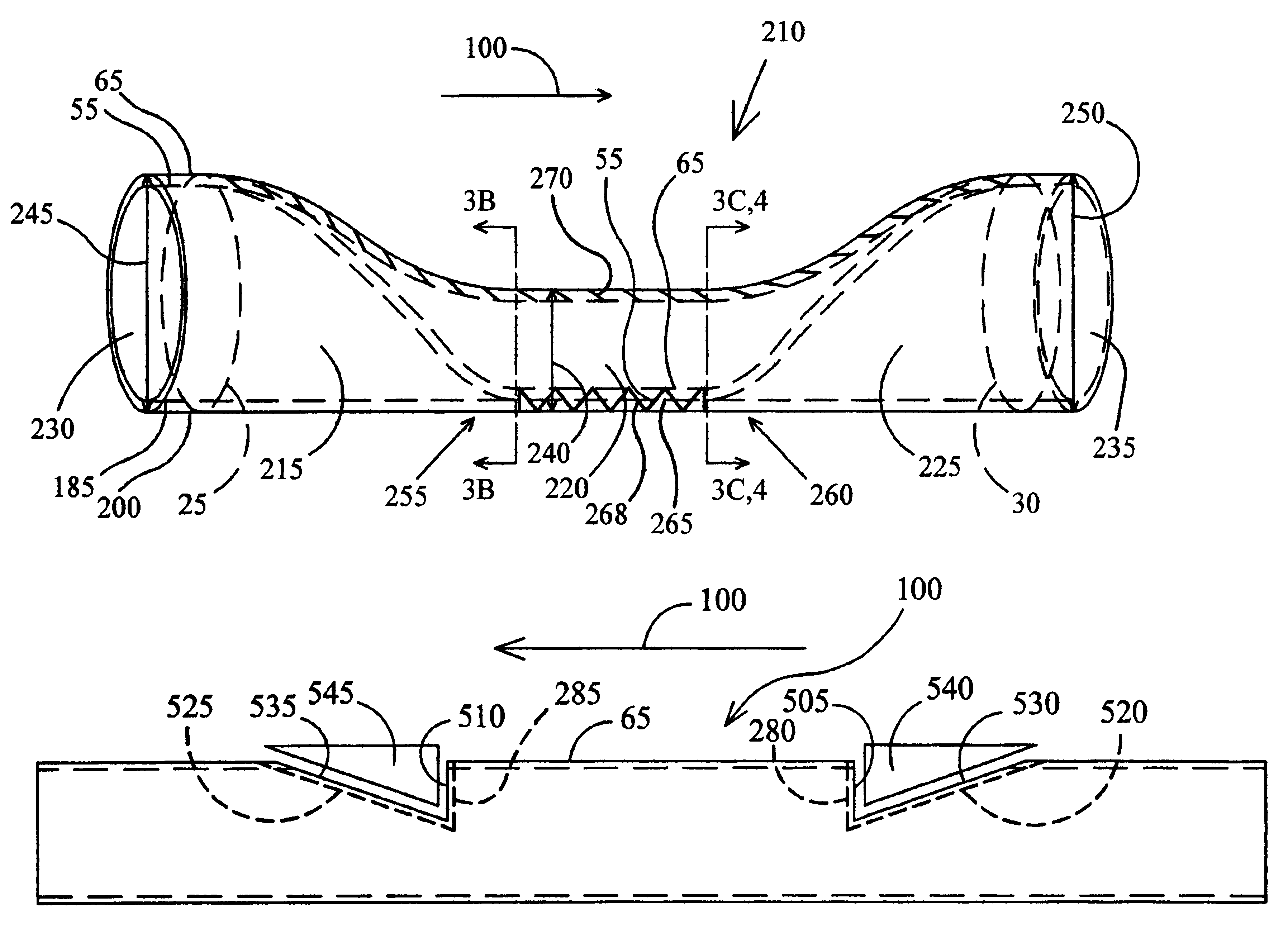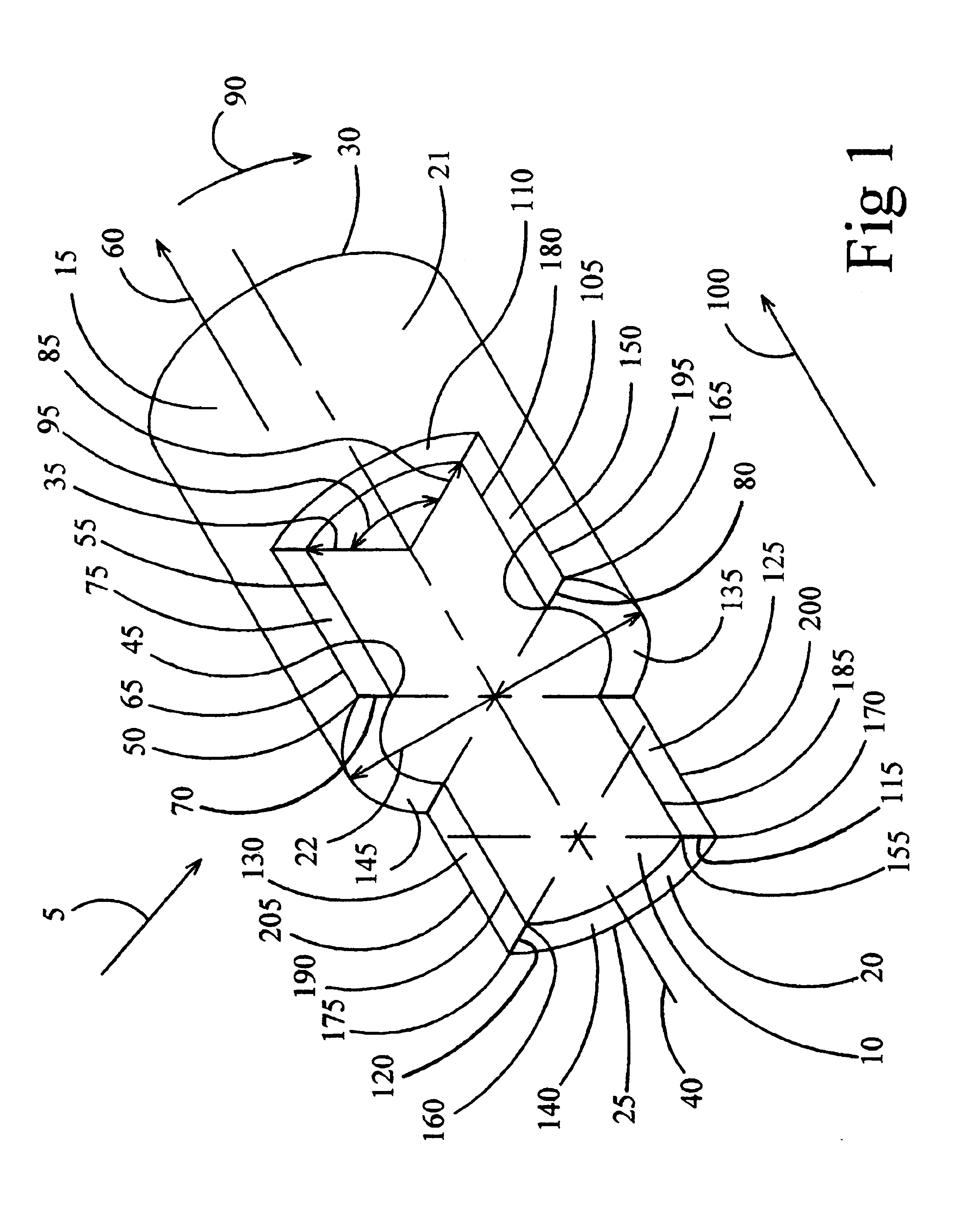In situ venous valve device and method of formation
a venous valve and in situ technology, applied in the field of vascular valve devices and methods, can solve the problems of vericose vein formation, venous system and blood flow from the deep vein system, and the formation of vericose veins in the leg, and achieve the effect of simple design and ease of formation
- Summary
- Abstract
- Description
- Claims
- Application Information
AI Technical Summary
Benefits of technology
Problems solved by technology
Method used
Image
Examples
Embodiment Construction
[0070]An embodiment of the venous valve of the present invention is formed from an approximately cylindrically shaped segment of distended native vein and the formation occurs with the vein in place in its naturally occurring in situ position. Once the venous valve has been formed, it can be contiguous with or it can be attached to native vein tissue both upstream and downstream from the venous valve. The structure of the venous valve and the methods for its construction are most easily and accurately described by referring to a cylindrical coordinate system to describe various properties or characteristics of the native vein and apply these characteristics to the formation of the venous valve of the present invention.
[0071]A venous valve of an embodiment of the present invention could also be formed from a segment of vein or other tissue taken from any suitable location within the same patient that requires the venous valve. The segment of vein containing the valve formed by the me...
PUM
 Login to View More
Login to View More Abstract
Description
Claims
Application Information
 Login to View More
Login to View More - R&D
- Intellectual Property
- Life Sciences
- Materials
- Tech Scout
- Unparalleled Data Quality
- Higher Quality Content
- 60% Fewer Hallucinations
Browse by: Latest US Patents, China's latest patents, Technical Efficacy Thesaurus, Application Domain, Technology Topic, Popular Technical Reports.
© 2025 PatSnap. All rights reserved.Legal|Privacy policy|Modern Slavery Act Transparency Statement|Sitemap|About US| Contact US: help@patsnap.com



